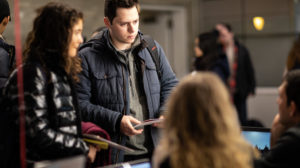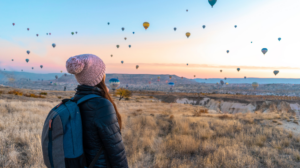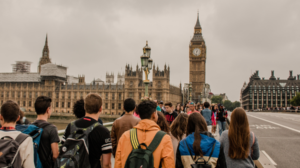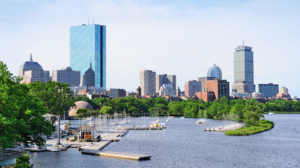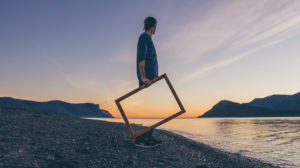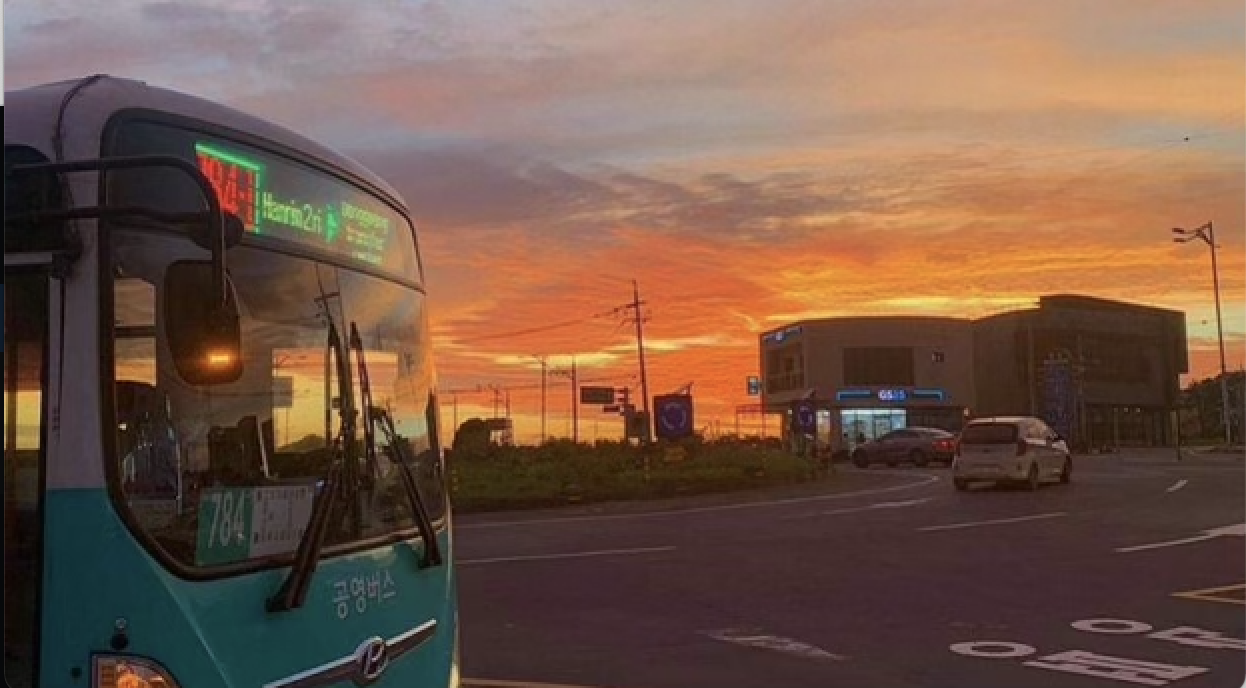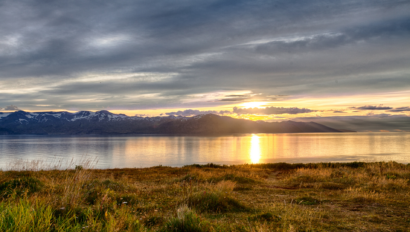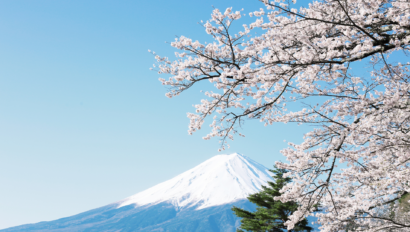It was a sight that I never thought I was going to see in Seoul: palm trees.
A cluster of palm trees lined the front of the airport, gently waving at our group with a slight dance from left to right.
It was a feeling that I never thought I was going to feel in Seoul: wind.
The breeze brushed upon my shoulders, sifting through my hair and meeting itself back into the clouds––which by the way, were situated so low in the sky that they looked close enough to touch.
The list could go on and on. The smell of ocean salt, the wide landscape, the proximity to the sea––all things that I haven’t experienced in the past few weeks since going abroad.
We were in Jeju-do, South Korea.
Jeju-do: the land of hallabong (a Jeju-specialty orange), heuk dwaeji (black pig), and an amazing ocean view. Jeju-do is an island just south of Korea. With just an hour-long plane ride, you can find yourself at a place with a different climate, specialty foods, and landscape from Seoul.
Accompanied with the hour-long plane ride was an amazing, luxurious, two-hour sleep. We landed at the Jeju International Airport at a crisp 8 a.m., following a restless night of last-minute packing and tracking down buses to the airport.
Right next to the airport was a road lined with endless rainbow blocks. While waiting for our scheduled brunch place to open up, we walked along the blocks as our first trip destination, taking a quick stroll to the oceanfront. Large black rocks bordered the ocean to form a sight that almost looked like it was from a movie.
But at last, the cries of our growling stomachs were answered as the clock struck 10 a.m., and we were able to venture to our brunch place. We stuffed ourselves with french toast, eggs benedict, bacon and pancakes, and more, fueling us for the day ahead of us. All we had left was to check into our Airbnb, and then we’d be on our way to explore the vast island ahead of us.
And “vast” land is definitely not an understatement. One thing I forgot that was convenient about urbanized cities? Public transportation. The GPS iPhone applications that we once used no longer worked the same on the island––estimated arrival times ceasing to exist on the apps. While we were still adjusting to Jeju-do, our first day there became a waiting game between us and the bus––testing who would give up first.
Luckily, the bus eventually arrived, and we were on our way to visit the first Innisfree ever to be built. Innisfree is a famous South Korean cosmetic brand with branches spanning internationally. The Innisfree store was spread out across one of the greenest pieces of land I’ve ever laid my eyes on. Hidden by large, thick-leaved trees, the store almost looked like a magic potion shop that you’d usually find in fairy tales––except ten times bigger.
Walking in, you’re immediately greeted by white lights, lots and lots of incense, and billions of products at your reach. To your left, you’ll see people working hard on molding do-it-yourself soaps, and to the right, you’ll see the store’s specialty café. Outside was nothing short of amazing, either. A bright green field containing strips of bushes laid next to the Innisfree. It was almost like it was asking for people to take once-in-a-life pictures there.

After filling up our camera roll with nothing but the color green, we continued our green obsession and ventured over to the Spirited Garden, a Bonsai-themed garden filled with trees, coy fish ponds, and waterfalls. Spirited Garden was once a deserted wasteland until Director Sung decided to turn it completely around in 1968 as part of a personal project. Now, it sits in Jeju-do as a mini-garden wonderland with a cafe that offers a beautiful view of the garden and the towering Jeju mountains. I ordered the organic Jeju Matcha Latte, which, by the way, would be two out of the four matcha lattes that I would order throughout the duration of the two-night trip. Trust me, it’s a healthy obsession.
But, the highlight of the day hadn’t come just yet. Up next was the taste test of Jeju’s specialty: black pig. On any street corner, wherever you are, you are guaranteed to be greeted with large signs with the words heuk dwaeji scrawled in a bold font, attracting tourists, locals, and more.
The first sign that it was going to be a good restaurant? Well, it was both good and bad news; the wait was predicted to be up to an hour long. We waited in tense anticipation, refreshing our online waiting list every three seconds until we were finally escorted to our seats.
The restaurant atmosphere was that of any packed, busy, popular Korean barbeque restaurant you’ve been in: filled with a chaotic amount of conversations, fire smoke, and most importantly, the smell of meat.
We ordered the most popular item on the menu, and the meat came out in an instant. A waitress helped load the meat onto the grill, cutting and cooking it every step of the way. Korean barbeque restaurants typically allow the customers to cook their own meat, but to handle the precious Jeju-do specialty, the employee diligently worked away on our grill.
Then, it was finally time for a taste. I perched the cooked slice of meat on top of my green onions––a common side dish in Korea that consists of thin, long green onions mixed with a savory-sweet red sauce––and prepared my taste buds for a dish that I never thought I’d be able to taste before.
And, spoiler alert: it was worth it. As someone who prides themself on analyzing food texture, I can confidently say that this was one of the most tender, juiciest pieces of meat I’ve ever tried. The taste was fairly comparable to samgyupsal (삼겹살), or Korean pork belly, but the texture was what really made the black pig stand out from the rest.
But that, of course, was not the end of our food adventures. The next morning, we went to Dang Dang, a cafe that specializes in fluffy soufflé pancakes. The pancakes are completely drenched with what seemed like white, vanilla-flavored sauce and topped off with an orange fruit to almost make the pancake look like a cartoon egg. But wait––I haven’t even gotten to the best part. Once you shake the table or give it a little poke, it jiggles completely. You’re raised to not play with food––but it’s an exception at Dang Dang.
Moving on along with our packed schedule, we headed to an orange-picking farm. Unfortunately, orange picking is typically exclusive in the wintertime and thus wasn’t available for our group. However, we still went to the orange farm and ordered their famous drinks. Before trying the orange delicacies, we walked through the garden where oranges would soon bloom.
Travel is a time of self-discovery: and I soon found out I wasn’t as great with nature as the camping lover that is me thought. Accompanied by the bushes of green were also mosquitos which would soon become one of our group’s worst enemies on the trips. However, we were able to wrap up the experience with some fresh ade and juice.
Up next was Iho Tewoo Beach, a beach famous for a red lighthouse that takes the form of a horse. As a native Californian, it was comforting to be surrounded by familiar palm trees, the feeling of dipping your toes in the water, and having your feet sink into the soft sand.
Sunday marked our last day on Jeju-do, and we made sure to end it with a blast. We visited Jeju’s Rail Bikes, a place where visitors can board on rail bikes that take you on a nature trip looping through the grassy mountains and forests.
I wasn’t exaggerating when I was describing everything in Jeju-do as green. There was absolutely no part of the scenic ride that wasn’t filled with green. Everything looked like a coloring book, with the only crayon available being multiple shades of green. The rail bikes looped us around the landscape on tracks, going on occasional dips where we’d put our hands up and act as if we were on a roller coaster.
But soon, it all came to an end. Before we knew it, we found ourselves at the Jeju International Airport, boarding the last plane to Gimpo Airport.
Although it was short, going to Jeju-do was one of those once-in-a-lifetime experiences that I never knew I was going to get. With two weeks left in my program, I’m curious to unlock other parts of Seoul that I never anticipated to explore.

